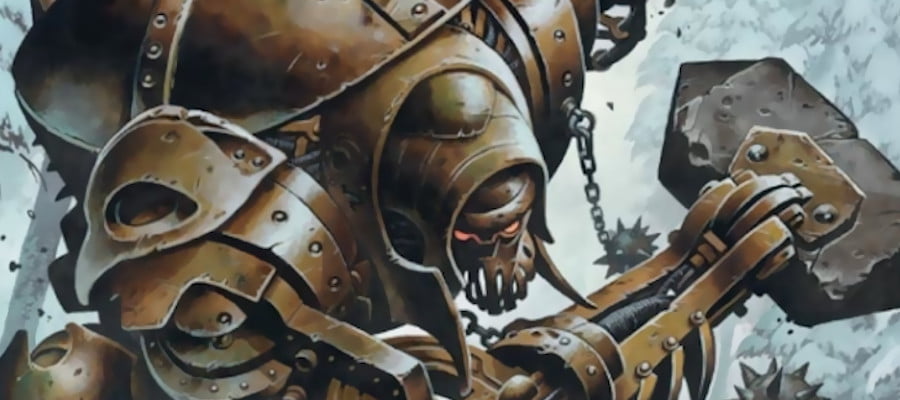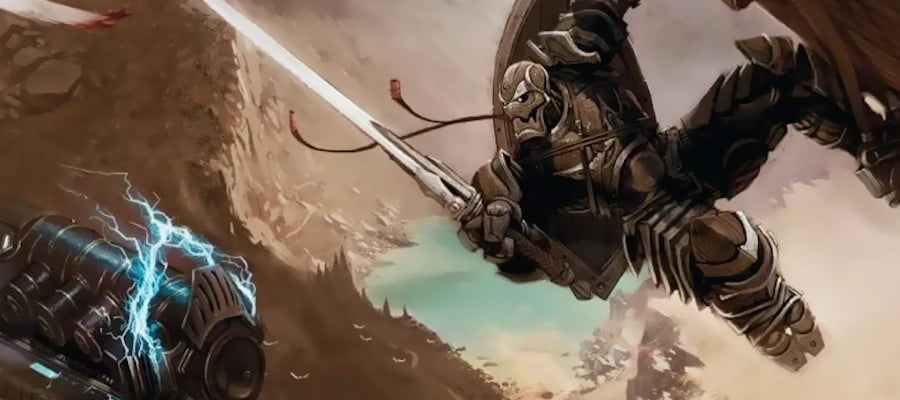When you give a thing a name, you give it a life.
Eberron is a Dungeons and Dragons setting that first launched in July 2004, for Dungeons & Dragons 3.5, and much ink has been spilled about it, not the least of which is in their official books. It’s a great setting, and it has a bunch of fun things put in it, including shapeshifting genderqueer cuties and mechanised robot people, and oh yeah, an entire country that’s got cursed fog rolling through it. Eberron is a fun setting and I like it.

Eberron is also the first time I ever encountered the word Magepunk.
There isn’t really a good resource I could find about the origin and etymology of magepunk; most attempts to explain it just point to the term Steampunk, and then, from Steampunk, back to Cyberpunk, and when I investigated Cyberpunk I got to hear a lot of boring nerds telling me how other people didn’t get Cyberpunk right. Either way, I did want to see if there was some greater history of Magepunk as a stylistic movement that I could do as a brief history.
Turns out: I can’t!
I can’t find any other greater source or any other core identity for what ‘magepunk’ is or means. And what’s more, I don’t know enough about genre media of the past to really explain that this or that ‘is’ magepunk. I think it might be a bit like Kafka, and now we have a term for it, and works created in the style, we can look back into the past to see things that now can be considered magepunk.

The Magepunk aesthetic is therefore kind of crystallised in Eberron’s aesthetic, which can for the early days signify that particular visual style that Wayne Reynolds got to define. It’s basically a sort of post-industrialised world, where widespread adoption of magic leads to a world that looks more like ours. See, things like street lights and sewage and mass transit are all valuable things that, as presented in setting, can be done affordably with reasonably available and affordable magic.
Even expensive-seeming things that require a huge investment for an individual can be made affordable distributed over time. If a single magic wand could power a train all the way along a distance, then if the trade between the two locations just has to be worth more than the wands to make that a commercially viable exchange.
Magepunk is also the aesthetic you’ll see used in settings like Magic: The Gathering’s Ravnica, where the setting has a host of machines and devices that let the life of an everyday individual look comparable to lives like ours, but where a lot of the trappings of typical fantasy still gets to exist usefully. There are trains but also knights, and it allows for anachronistic mixing of cool things, and not just in ‘wooly mammoths could have been trained to pull the bricks of the pyramids’ or ‘Abraham Lincoln could have received a fax from a samurai’ kind of way where things you see as being unrelated were in fact contiguous.

Magepunk is a great aesthetic partly because it formalises something that’s always been true of these D&D settings. Why are things this way? Magic, duh! It’s how these things always work, but in the Eberron setting, and magepunk in general, magic is how you justify cool things like trains and wand-based machine guns and rocket shoes and stuff. By comparison in settings like Planescape and World of Warcraft and Eorzea, often magic is used to justify things like slave races or weird gender stuff.
Once I had the term magepunk it was really useful for me to describe my own setting, especially because I could borrow from cyberpunk one of its most important ideas: We live in a cyberpunk now, but it’s not evenly distributed. The same thing is true in Magepunk; there are places where the ‘magepunk’ elements of big swanky swinging doors and haunted thrones are all made to look arcane and old, and without that industrialised flair, for a variety of reasons, but there are centers of population where you do get those things.
And that’s how it is with the future and with the past; they’re different places. They do things differently there.